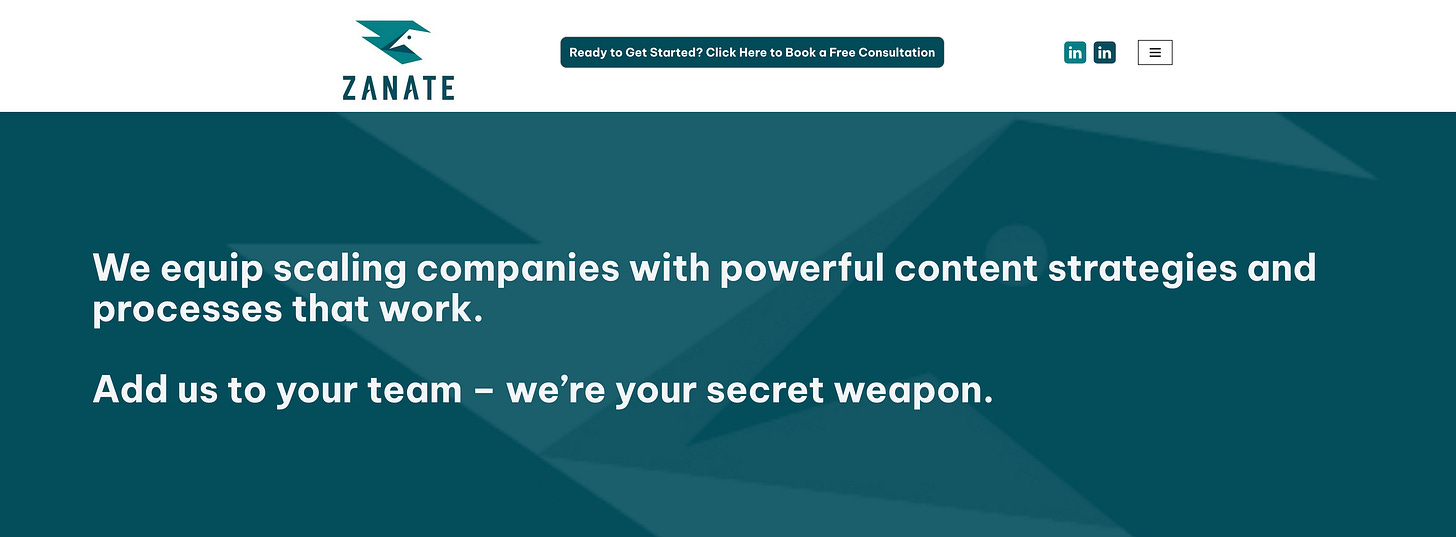Edition 5: Why Your Ideal Client's 'Frustration Language' Is Essential to Know
Every one of us has a 'frustration language' we use when explaining a problem or an issue we're encountering. That language is a huge hint for content creators.
A live look at your ideal client assuming no one understands them:
This level of frustration is palpable.
It’s something we’ve all experienced at one time or another when we feel like we’re either not understood at all - or misunderstood - by the people marketing solutions to us for problems we don’t have, or creating problems we don’t have then selling cures to us we don’t need.
To eliminate this frustration for your ideal clients you need to take the time to understand their ‘frustration language.’ This doesn’t come easily and is going to take some legwork on your behalf, but it’s legwork that’s worth doing.
💡 1 Big Content Idea: Take the Time to Understand Your Ideal Client’s ‘Frustration Language’
When your ideal clients are frustrated they sound a certain way. There are very particular words they use to share their frustration. This language usually deals with that frustration makes them feel - it’s not just about frustration but the sense of helplessness or ‘stuckness’ and the stress this causes in their lives.
They frustration also comes from the notion that no one understands what they’re going through, much less cares about what they’re going through.
When you have consistent conversations with your customers and clients and ask the right open ended questions its much easier to draw out their frustration language, uncovering the phrases they use and the emotions they show when they talk about their frustrations.
These phrases and the emotions tied to them present an incredible opportunity for you to create laser-targeted content which speaks directly to how your product, service or solution can end their frustration and move their lives in a positive direction.
🪓 2 Actions to Take: Mimic the ‘Frustration Language’ & Show What the Other Side Looks Like
If you’re not already, you need to chat with a few current customers and get a feel from them for what their frustrations were prior to working with you or choosing you as a resource. And also talk to people who fit your ideal client profile about their current frustrations.
When you isolate their frustration phrases, you can mimic those in the content you create, while also providing solutions.
So first off, what does effective mimicking look like?
Mimicking Your Client’s Frustration Language
When you’ve identified a few of your client’s ‘frustration phrases’ you should replicate these in your content strategy.
Let’s say your ideal client is a program manager in a highly technical organization. They’ve been looking for a solution that will make work easier, more repeatable and scalable for their team of software developers.
One of the program managers you chat with mentions that the solutions they’ve tried so far ‘are always missing an important piece’ and that they’ve yet to find a ‘scalable solution that’s also fully functional.’
So your content should continue to focus on the all-encompassing nature of your solution and the fact it’s also modular & customizable enough to be scalable as you grow. You’re showing empathy by mirroring the frustration phrases and showing a ‘preview’ of what it could look like on the other side.
What Does the Other Side Look Like?
What does it feel like when your client’s frustration evaporates? When you know the root of their frustration, it’s much easier to envision the ‘other side.’
Each piece of content that you create given this approach should show glimpses of that other side, typically in direct comparison, and as an alternative to the ‘frustration state.’
When creating this content focus on the emotional shifts, from frustration to calm and satisfaction. What does that feel like, specifically for your ideal client? Because they’re now satisfied with that particular aspect of their work and are no longer frustrated in not being able to find a solution that fits their needs, what does that mean for their day to day?
Focus on the ‘other side’ over and over again.
Make it the core of the picture you paint in your content strategy and marketing strategy and you’ll see people start to pull closer.
Enjoying what we’re putting down so far?
Share The Content Code with a friend who loves great storytelling.
We’ll love you forever 😆
💻 3 Cool Resources to Check Out
Here are three tools that we use daily in our work as fractional content strategists that are worth checking out:
We recommend you check out these three amazing resources:
Todoist- Todoist is a lifesaver for me. With my various projects that bubble up into eleventy billion one-off things to do each day, it helps me keep organized and sane by making it easy to prioritize tasks and knock them off one at a time as I get them done.
Passionfroot- Passionfroot is a cool affiliate/influencer marketing application that would be worth y’all checking out. I’m starting to dabble with this on LinkedIn, and their platform makes it easy to find clients that may have products/services for you to promote via social for some extra income.
Nethunt- If you live in GMail, and want a CRM that naturally aligns with that and your LinkedIn activity, Nethunt is a great option. It’s Chrome extension makes adding new LinkedIn contacts into your CRM totally seamless.
How We Help Our Clients
Our company, Zanate Ventures, is a content studio based in Austin, Texas. Our goal is to help companies tell a better company story through fractional content strategy services including, but not limited to:
Website content refreshes - to the customer’s transformation
Content strategy - focused on repeatable systems and processes
Marketing funnel development leveraging:
Social media
Blog content
Email marketing & outreach
Press mentions, appearances, and exposure
We offer several levels of engagement, but everything kicks off with a 30-Day Diagnostic period to identify the quickest wins and long-term plays that will help energize your company’s story.
Interested to learn more?
Book a 30-minute discovery call here:





